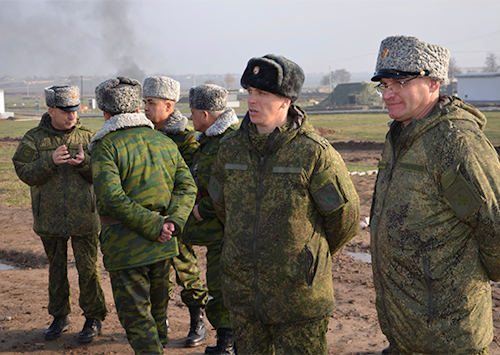While global attention is focused on the Middle East, the South China Sea and Venezuela, Central Asia may soon be the scene of a new destabilizing wave. In particular, in recent times it seems that the internal situation in the Republic of Tajikistan has gone through a clear deterioration.
Despite several years of remarkable growth, during the 2018 the economy of the Central Asian country has shown considerable signs of slowing down, on the other hand in line with what is happening at a global level. However, precisely in Tajikistan, the slowdown in the economy could act as a catalyst for the start of something very serious.
Central-Asian and ex-Soviet landlocked countries, Tajikistan was the scene, between the 1992 and the 1997, of a bloody civil war that ended only thanks to the decisive military intervention of Russia which, since then, has maintained a robust military contingent of about 10-15.000 men and actively supports the government of President Emomali Rahmon, continuously in power since November 1992. And it was the Russian Federation's deputy interior minister, Igor Zubov, who launched the 28 alert on January 2019, stating that the Russian secret services have recorded over the last few months an important shift in ISIS and elements belonging to the most radical Taliban factions from various parts of Afghanistan and even Pakistan towards the border of Tajikistan, where they have already sporadically engaged both Tajik and Russian soldiers in combat. The 28 August 2018, for example, unidentified aircraft (almost certainly Russians) bombed a wooded area located on the Afghan side of the border between the two countries after 2 Tajik border guards had died in a firefight when they repulsed an attempt at Islamist infiltration.
 An Islamist contagion in Tajikistan can easily expand to Russia thanks to the so-called "migrant caravan". According to the latest UN estimates, the population of Tajikistan should be around 8.574.000 people; however, according to a report compiled by the Russian non-governmental organization "Federation of Migrants" beyond 1.745.000 Tagiki would have moved to Russia in the period only between January and September 2018 (a figure slightly lower than the total number of migrants arrived in the whole European Union in the two years 2016-17). If we take into account the fact that the typical Tajik migrant-worker in Russia is male, between the ages of 18 and 45 years, and that the Tajik population in that age group corresponds to about 5.498.000 people (of which 2.723.000 men and 2.775.000 women) it would therefore seem that almost half of the active male Tajik population has moved to Russia, with the risk of causing a double social and security bomb at home and abroad.
An Islamist contagion in Tajikistan can easily expand to Russia thanks to the so-called "migrant caravan". According to the latest UN estimates, the population of Tajikistan should be around 8.574.000 people; however, according to a report compiled by the Russian non-governmental organization "Federation of Migrants" beyond 1.745.000 Tagiki would have moved to Russia in the period only between January and September 2018 (a figure slightly lower than the total number of migrants arrived in the whole European Union in the two years 2016-17). If we take into account the fact that the typical Tajik migrant-worker in Russia is male, between the ages of 18 and 45 years, and that the Tajik population in that age group corresponds to about 5.498.000 people (of which 2.723.000 men and 2.775.000 women) it would therefore seem that almost half of the active male Tajik population has moved to Russia, with the risk of causing a double social and security bomb at home and abroad.
However, the Tajiks are not the only worrying data for Moscow; also according to the NGO "Federation of Migrants", in the same time period, between January and September 2018, about 3.400.000 citizens of Uzbekistan (equal to more than 10% of the total population of the country) have also moved into Russia. Most of the migrant-workers of Central Asia then hold feelings of resentment towards the political leaderships and elites of their respective countries, guilty in their eyes of the dramatic local social situation that has been created over the last decade, and this exposes them to the risk greatly of contagion by extremist ideologies. By way of example, it is sufficient to recall that the "foreign fighters" that ISIS has managed to recruit over the years among the inhabitants of the ex-Soviet republics of Central Asia have been over 11.000.
If the crisis situation persists indefinitely, Tajikistan and Central Asia all could soon turn into a new outbreak of instability.
Photo: MoD Fed. Russian












